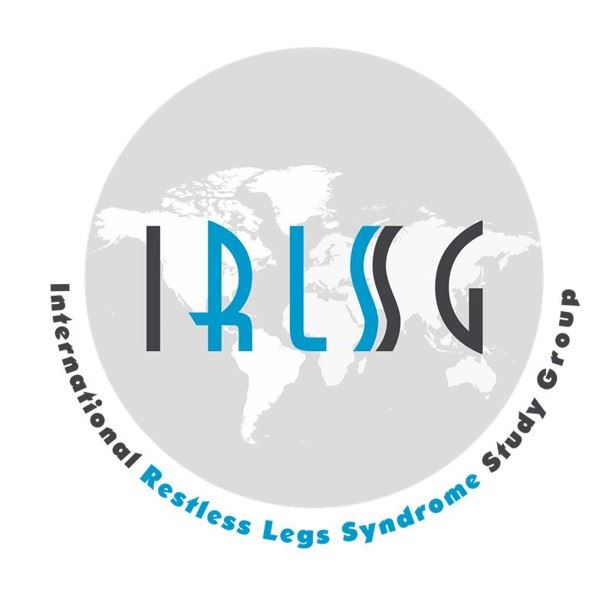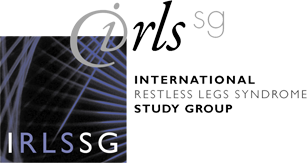
Committed to Advancing Basic & Clinical Research on RLS
- Home
- 2022 Annual Meeting
IRLSSG 2022 Annual Meeting in Charlotte, NC
June 7, 2022 from 2:00PM to 10:00PM (dinner included)
Celebrating 20 years 2002-2022
Agenda
2:00 – 2:05 Welcome and announcements – John Winkelman (USA)
2:05 – 4:10 RLS: The patient and the treatment
Moderator: Denise Sharon (USA)
2:05 – 2:20 How effective are treatment guidelines for augmented RLS? – John Winkelman (USA)
Learning objectives:
1. Understand the current treatment guidelines for augmented RLS
2. Identify success rate of first-line approaches to augmented RLS in a clinical sample
3. Understand the associations of good and poor success of current treatment guidelines for augmented RLS in a clinical sample
2:20 - 2:35 RLS Patient ODYSSEY II RLS survey - Charles Phelps (USA)
Learning objectives:
1. Review results from the ODYSSEY II RLS Foundation patient survey
2. Understand the implications of ODYSSEY II results in terms of ways to improve RLS patient outcomes
3 Assess potential future programmatic options for RLS Foundation.
2:35 - 2:50 Prevalence and Impact of muscle cramps on Restless legs - Khaled Albazli (USA)
Learning objective:
Provide attendees with new data on the prevalence of muscle cramps and their impact on the sleep, functioning and quality of life of patients with restless legs.
2:50 – 3:05 RLS and dementia - Nalaka Gooneratne (USA)
Learning objectives:
1. Describe sleep quality in older adults with Alzheimer’s Disease Related Dementia (ADRD).
2. Identify risk factors for RLS and behavioral characteristics of RLS in older adults with ADRD.
3. Discuss RLS management in older adults with ADRD.
3:05 – 3:20 Iron and vitamin D: how, when, and why we combine treatments – Rosalia Silvestri (Italy)
Learning objectives:
1. Understand the role of vitamin D in RLS
2. Recognize and comprehend the interactions between iron and vitamin D
3. Explore potential benefits for iron and vitamin D supplementation in RLS
3:20 - 3:35 Exercise and RLS – Katie Cederberg (USA)
Learning objectives:
1. Understand the current literature regarding exercise and RLS
2. Recognize what patients want to know about exercise
3. Discuss future directions to address patient needs
3:35 - 3:50 IV iron in children – Lourdes DelRosso (USA)
Learning objectives:
1. To discuss Intravenous iron protocol in children
2. To review side effects and potential complications of intravenous iron in children
3. To identify pediatric populations that can benefit from IV iron
3:50 – 4:10 Antidepressant use and PLMS in children – Raffaele Ferri (Italy)
Learning objectives:
1. Learn about the evidence of the effects of antidepressants on PLMS in children and understand the differences between them
2. Learn about the possible mechanisms leading to the increase of PLMS with the use of certain antidepressants.
3. Learn about the possible benefits of combining antidepressants in the treatment of peditric depression, with reference to PLMS.
4:10 – 4:20 Break
4:20 – 5:55 RLS: Toward a better understanding
Moderator: Rochelle Zak (USA)
4:20 – 4:35 African American RLS - our experience - David Rye (USA)
Learning objectives:
1. Describe RLS phenotype(s) in African-Americans including comorbidities
2. Identify clinical pathways through which RLS presents in African-Americans
3. Enhance recognition of RLS in African-Americans
4:35 - 4:50 Increased silent cerebral microvascular disease in RLS and PLMS: Results from MRI and post-mortem studies – Arthur Walters (USA)
Learning objectives:
1. Learn that patients with RLS have more silent cerebral microvascular disease by MRI scan than controls.
2. Learn how PLMS are correlated with cerebral microvascular disease in patients with first-ever minor stroke or high-risk transient ischemic attack
3. Learn that patients with RLS have more silent cerebral microvascular disease by autopsy than controls.
4:50 – 5:05 The role of Substantia nigra echogenicity index as measured by TCS in the prediction and evaluation of IV iron response - Diego Garcia-Borreguero (Spain)
Learning objectives:
1. To identify current methods of evaluation of brain iron content2. To understand the role of TCS-measured echogenicity index of the Substantia Nigra as a biomarker reflecting brain iron content3. To understand its role in the prediction of response to IV iron in adults4. To understand the use of the SN echogenicity index in the evaluation of response vs non-response to IV iron
5. To understand the potential role of TCS in the evaluation of pediatric RLS5:05 – 5:20 Thoughts on Iron Homeostasis in RLS - Christopher Earley (USA)
Learning objectives:
1.To provide a brief overview of iron-related data form studies in RLS
2. To provide insights into the potential mechanistic factors underlying altered brain iron homeostasis.
3. To provide ideas for future research
5:20 – 5:35 Sex-specific outcomes of central iron deficiency on spinal circuits: role of dopaminergics – Stefan Clemens (USA)
Learning objectives:
1.Present the behavioral outcome of central iron deficiency (CID) on spinal reflexes
2. Discuss sex-specific different outcomes of CID
3. Recognize the different modulatory roles of dopaminergics under CID conditions
5:35 – 5:55 A mouse model of RLS with aberrant cortical rhythms - Chia-Luen Leu, Germany
Learning objectives:
1. Name an enriched patient mutation in RLS.
2. Give an example of technical approaches to investigate RLS brain mechanisms in mice.
3. Define EEG features similar in mouse models and patients with RLS."
5:55 – 6:25 Update on IRLSSG projects
5:55 – 5:59 Animal models – Stefan Clemens (USA)
5:59 – 6:03 Pediatric RLS – Arthur Walters (USA)
6:03 – 6:07 Pediatric PLMD – Daniel Picchietti (USA)
6:07 – 6:11 Leg movement detection project – Raffaele Ferri (Italy)
6:11 – 6:15 Spark* PLMD – John Winkelman (USA)
6:15 - 6:19 Future of RLS treatment – Diego Garcia-Borreguero (Spain)
6:19 – 6:25 Break
6:25 – 7:00 Business meeting
6:25 – 6:30 Chris Earley on Richard P Allen Endowed lectureship
7:00 – 10:00 Dinner and networking
Directions:
Exit convention center on Brevard street (NASCAR Hall of Fame). Take left or proceed NE on Brevard for 1 block. 229 will be on right side of street.
Studio 229 on Brevard
229 S Brevard Street
Charlotte NC 28202
Target audience:
- Sleep specialists and internists interested in sleep disorders and in identifying and treating RLS with a more basic understanding of the disorder.
- RLS experts and researchers in the field.
- Trainees interested in learning and developing the field.
|
